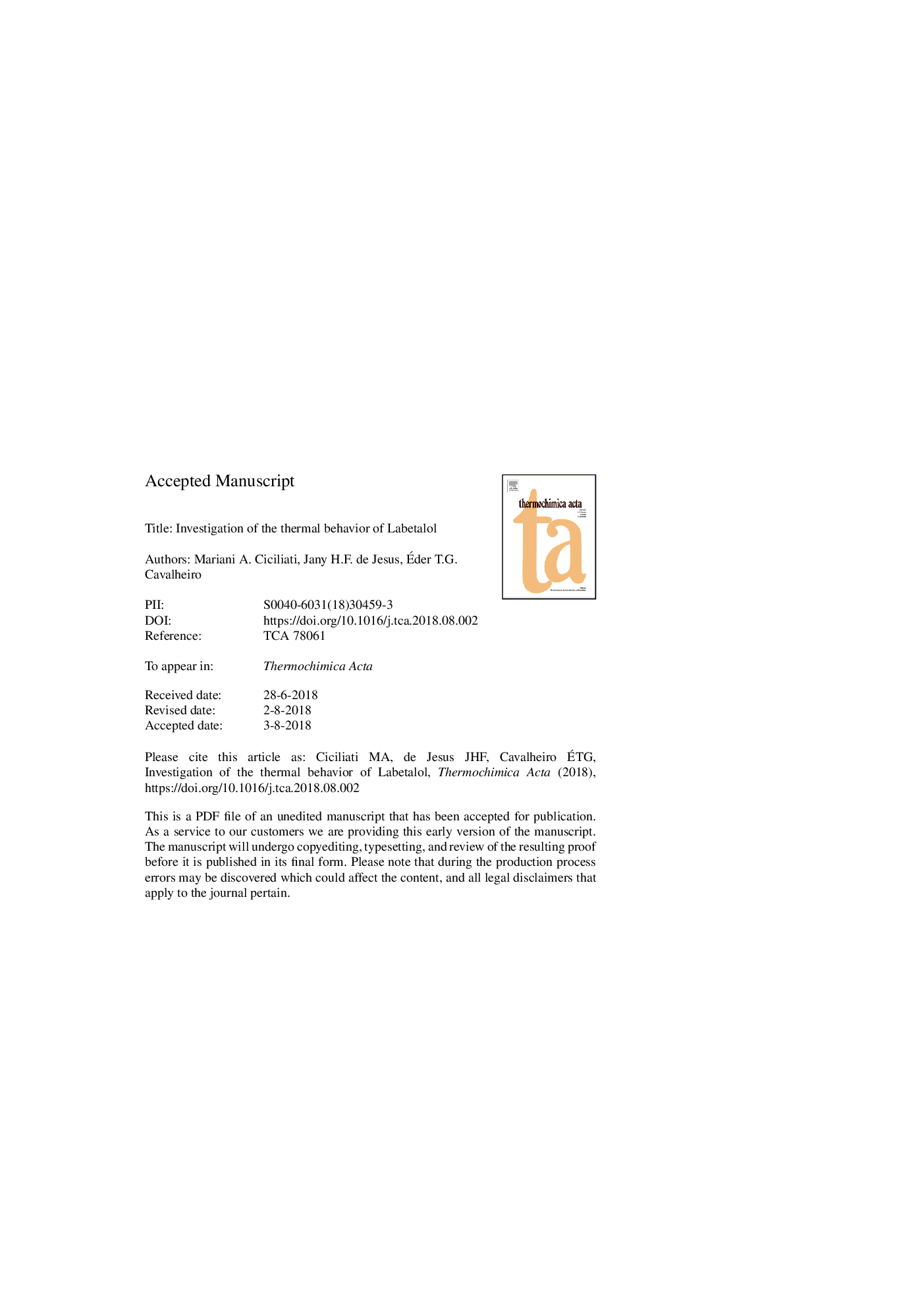| Article ID | Journal | Published Year | Pages | File Type |
|---|---|---|---|---|
| 7061843 | Thermochimica Acta | 2018 | 23 Pages |
Abstract
Thermal behavior of labetalol hydrochloride (2-hydroxy-5-[1-hydroxy-2-(4-phenylbutan-2-ylamino)ethyl]benzamide), a β-blocker antihypertensive drug, has been investigated using thermogravimetry (TG), differential thermal analysis (DTA), differential scanning calorimetry (DSC), thermogravimetry coupled to infrared spectroscopy (TG-FTIR), hot stage microscopy and gas chromatography coupled to mass spectrometry (GC-MS). TG/DTA and TG-FTIR analysis showed that labetalol decomposed after melting releasing water in the first step of mass loss. In sequence water and isocyanic acid (which decomposed in ammonia and carbon dioxide) were detected in the second step, and methylbenzene in the third decomposition step. The decomposition took place in the same way in nitrogen and air atmospheres until 550â°C, however in air there is one more step due the oxidative burning of the carbonaceous material, resulting in practically no residue at the end of the run. DSC curves demonstrated that the sample melted at Tâ=â180.8â°C, without recrystallization on cooling. Hot stage microscopy confirmed that labetalol melted and decomposed releasing water from its structure. GC-MS analysis allowed characterizing some intermediates of the drug degradation and the identification of other degradation products. Based on these results a mechanism for labetalol hydrochloride thermal behavior was proposed.
Keywords
Related Topics
Physical Sciences and Engineering
Chemical Engineering
Fluid Flow and Transfer Processes
Authors
Mariani A. Ciciliati, Jany H.F. de Jesus, Ãder T.G. Cavalheiro,
